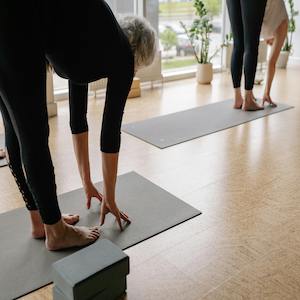Sedentary behavior and physical activity preferences in patients with knee osteoarthritis: insights from a cross-sectional study

All claims expressed in this article are solely those of the authors and do not necessarily represent those of their affiliated organizations, or those of the publisher, the editors and the reviewers. Any product that may be evaluated in this article or claim that may be made by its manufacturer is not guaranteed or endorsed by the publisher.
Accepted: 18 September 2024
Authors
Objective. Osteoarthritis (OA) is a prevalent condition associated with significant disability, particularly affecting mobility and daily activities. Sedentary behavior is common among individuals with knee OA, influenced by factors such as pain, functional limitations, and sociocultural aspects. Despite the benefits of physical activity in managing knee OA, many patients remain sedentary. Understanding factors contributing to sedentary behavior and patients' preferences regarding physical activity is crucial for effective intervention. This cross-sectional study aimed to assess the level of physical activity among Moroccan patients with knee OA, identify factors associated with sedentary behavior, and explore patients' expectations and preferences regarding physical activity.
Methods. We conducted a survey involving 130 patients with knee OA. Information on sociodemographic characteristics, disease profile, physical activity levels using the International Physical Activity Questionnaire Short Form, barriers to physical activity, and preferences for educational interventions was collected.
Results. The mean age of the patients was 59.9±10 years, with females comprising 84.6% of the sample. Sedentary behavior was prevalent in 69.2% of patients and was associated with factors such as age (p=0.005), lack of prior physical activity (p=0.01), knee pain (p=0.02), functional disability (p=0.01), socioeconomic factors (p=0.01), and non-recommendation of physical activity by rheumatologists (p=0.0001). Patients expressed preferences for outdoor physical activity (39.2%), gym-based exercise (30.8%), audiovisual support (80%), and participation in physical activity workshops (66.7%).
Conclusions. Sedentary behavior is prevalent among knee OA patients. It is important to overcome this unhealthy lifestyle and to encourage the practice of physical activity in this population by combating barriers reported by patients.
Ethics Approval
The survey received approval from the Ethics Committee of the Faculty of Medicine and Pharmacy, Mohammed V University, Rabat, Morocco (approval no. 94/24) and was conducted per the ethical standards of the 1964 Declaration of Helsinki and its later amendments or comparable standards.How to Cite

This work is licensed under a Creative Commons Attribution-NonCommercial 4.0 International License.









